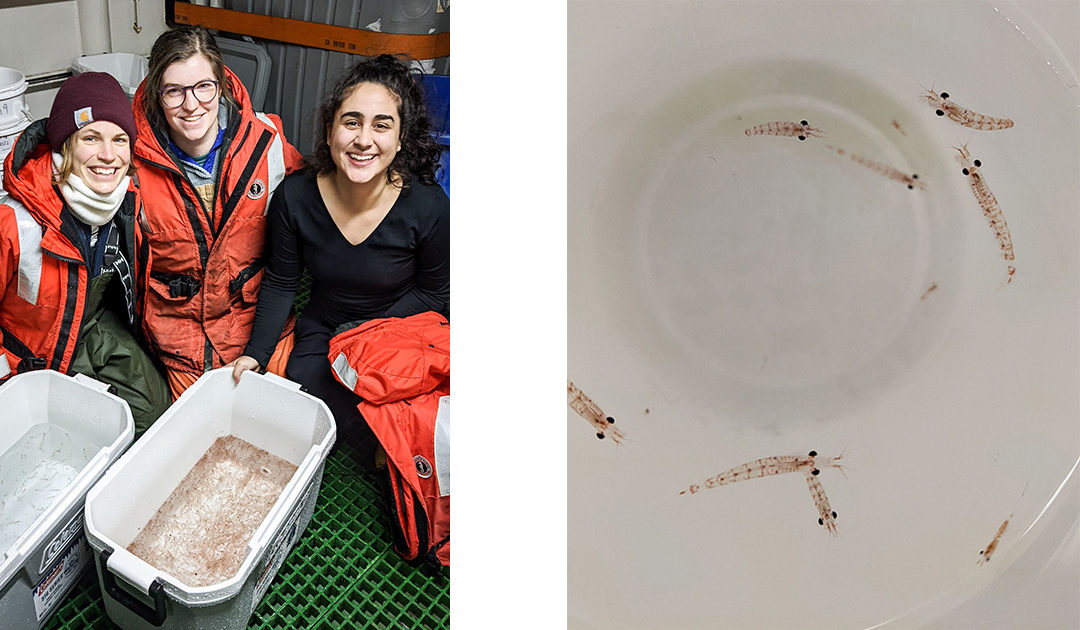
Antarctic krill plays the central role in the Southern Ocean food web as a food source for baleen whales, seals, fish, penguins and other seabirds. Its amazing survival strategies have been fairly well studied in adults, though understanding of how they survive the harsh winter is still quite incomplete. What strategies the young use over the long, cold winter under the ice has been almost completely hidden until now. So a team of female researchers at Oregon State University conducted two studies in the Antarctic winter to explore how juvenile krill make it through the dark season.
Since research expeditions to Antarctica usually take place in the southern summer, little is known about how Antarctic krill, for example, manages to survive the hostile conditions in winter. To answer some of the many unanswered questions, the all-female research team undertook a winter expedition to the western Antarctic Peninsula in 2019 to track the young krill’s survival strategies.
Krill grow to adulthood within two to three years. While adult krill live off their fat reserves in winter and sexually regress to juvenile status when food becomes scarce, larvae must eat throughout the winter to survive until spring, Kirsten Steinke, a doctoral student at Oregon State University and one of the authors of the two studies, says in an article in The Antarctic Sun. So far, winter survival strategies are well researched. However, it was unclear until now how the animals get over this time in the stage in between.

The research team, led by Kim Bernard, associate professor at Oregon State University, captured juvenile krill in the Southern Ocean and conducted feeding experiments at the U.S. Palmer Station on Anvers Island from May to September. In four food scenarios, they investigated how juvenile krill respond to different foods that they may also find in the region in the wild. For the first 70 days of the 140-day experiments, the researchers fed freeze-dried zooplankton in two of the aquariums and diatoms in the other two. From day 71, in Aquaria 1 and 3, juveniles were not fed and instead received only the limited amount of food from natural sea water. The animals in aquaria 2 and 4 continued to receive the same amount of food as before.
At intervals of one month, the researchers analyzed the physiology and physical condition of the young animals as well as the development of the reproductive organs of the females. After completing the experiments and data analysis, they found that juveniles use a mixture of larval and adult krill strategies during the winter. If food is available, they feed in winter, as do the larvae. If food is scarce, they use their fat reserves, just like the adult krill.

This combination of strategies allows krill females to initiate sexual maturation during the winter, although this normally does not occur until spring when food is abundant. The researchers noted, however, that this early development came at a cost, as the overall health and physical condition of the females deteriorated as they matured. The authors suggest that this is a response to the high energy expenditure required by ovarian growth.
At the end of the winter, the juveniles lost fat reserves again and returned to an earlier stage of development while their health improved. “The trade-off between reproduction and health in juvenile krill is important because early maturation can better prepare krill for the summer spawning season, but it also makes them more vulnerable to harsh environmental conditions,” Steinke explains.
If food availability changes in the future due to climate change during the course of the year, this could become a problem for Antarctic krill. The new findings are now helping to understand how krill will adapt to such changes.
Julia Hager, PolarJournal
More on the subject:





